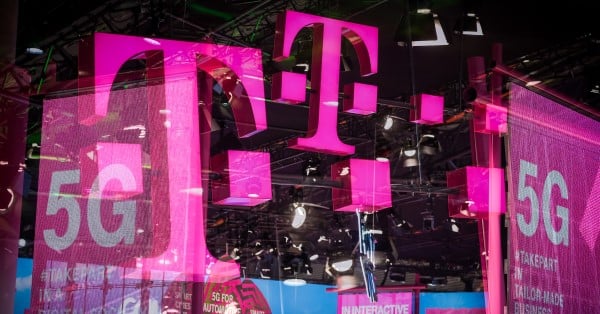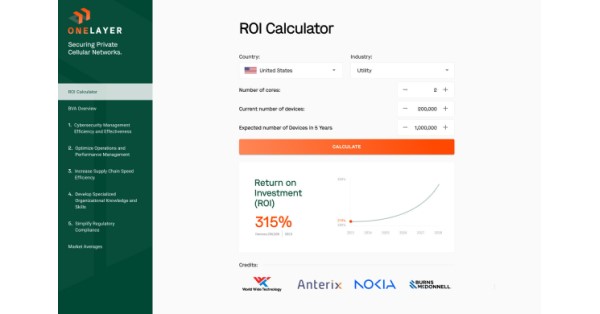Unlike traditional satellite phones that require special hardware, Vodafone’s service allows users to make calls, browse the internet, and send messages with their existing smartphones. The initiative aims to eliminate mobile coverage gaps, providing connectivity in remote and rural areas, including mountains and oceans.
How Vodafone’s Satellite Video Call Worked—A European First
Vodafone engineer Rowan Chesmer made the historic space-to-mobile video call from a mountainous location in Wales—an area that has never had mobile broadband coverage. The call was received by Margherita Della Valle, Vodafone Group Chief Executive, at the company’s space-to-land gateway in Newbury, UK.
This call marked a European first in satellite-to-smartphone communications. Unlike other satellite services that focus on emergency messaging, Vodafone’s solution delivers a full mobile broadband experience with speeds reaching up to 120 Mbps.
Astronaut Tim Peake, who was present at the event, emphasized the importance of communication in remote locations. Having spent six months aboard the International Space Station, he understands the need for seamless global connectivity.
How Vodafone’s Direct-to-Smartphone Satellite Network Operates
Vodafone’s direct-to-smartphone satellite service is powered by AST SpaceMobile’s BlueBird satellites, which operate in low Earth orbit (LEO). The space-to-land gateway connects these satellites to Vodafone’s terrestrial mobile network, ensuring seamless handovers between satellite and ground-based connectivity.
Key Advantages of Vodafone’s Satellite Network:
- No special hardware required – Works with any standard 4G or 5G smartphone.
- Full mobile broadband experience – Supports video calls, browsing, and messaging, unlike most existing satellite connectivity services that are limited to SMS and emergency alerts.
- Expands Vodafone’s network coverage – Helps close connectivity gaps in rural, mountainous, and offshore regions.
- Seamless integration – Functions as an extension of Vodafone’s existing mobile network, automatically switching between satellite and terrestrial signals.
Vodafone’s Roadmap for Expanding Satellite-to-Mobile Coverage
Vodafone is set to launch commercial services in Europe by late 2025 or early 2026. This move aligns with a broader industry trend, as competitors like AT&T, Verizon, and T-Mobile are also working on similar satellite-to-smartphone connectivity solutions in the United States.
In the U.S., AST SpaceMobile has received FCC approval to test its satellite coverage for AT&T, with full deployment expected after the European rollout. Meanwhile, SpaceX’s Starlink has also demonstrated satellite-based mobile communication but primarily focuses on text messaging rather than full broadband services.
Vodafone’s solution sets itself apart by delivering a high-speed broadband experience that doesn’t require specialized satellite phones. This makes it a more accessible and cost-effective alternative for users in remote locations.
Bridging the Digital Divide with Satellite Connectivity
The ability to provide direct-to-device satellite connectivity could be a game changer for regions with limited infrastructure.
Vodafone’s Chief Executive, Margherita Della Valle, highlighted how this technology will help connect underserved populations, ensuring that families, businesses, and emergency responders can stay connected.
Potential Applications of Vodafone’s Satellite Service:
- Emergency Connectivity – Immediate access to communication services in disaster-hit areas or regions without existing infrastructure.
- Rural and Remote Access – Providing mobile broadband to communities in isolated areas such as mountains, deserts, or offshore locations.
- Maritime and Aviation Connectivity – Improving communication for ships, aircraft, and offshore workers.
- Resilient Network Infrastructure – Strengthening mobile networks by offloading traffic in high-demand areas.
Vodafone’s Historic Legacy in Mobile Innovation
This breakthrough comes 40 years after Vodafone made the UK’s first-ever mobile phone call on January 1, 1985. Just as that call marked the beginning of the mobile era, today’s space-based video call signals the next step in global connectivity.
As Vodafone prepares for the full commercial launch of its satellite service, it continues to drive innovation in mobile communications, ensuring that no location is beyond reach.
Looking Ahead: What’s Next for Direct-to-Smartphone Satellites?
While Vodafone has not yet announced pricing details, the successful video call demonstrates the viability of satellite-powered mobile broadband. As the technology matures, direct-to-smartphone satellite services are expected to become a standard feature in global mobile networks.
With competitors like AT&T, Verizon, and T-Mobile working on similar services, the race to close mobile coverage gaps is heating up. Vodafone’s early success in Europe positions it as a leader in direct-to-smartphone satellite connectivity, paving the way for universal mobile coverage.
Final Thoughts
Vodafone’s historic space video call proves that seamless, high-speed mobile broadband via satellite is not just a concept but a reality. By 2026, millions of users across Europe and beyond could have access to continuous mobile connectivity, regardless of their location. This innovation has the potential to transform global communication, ensuring that no one is left without a connection—whether in the mountains, at sea, or in rural communities worldwide.


















